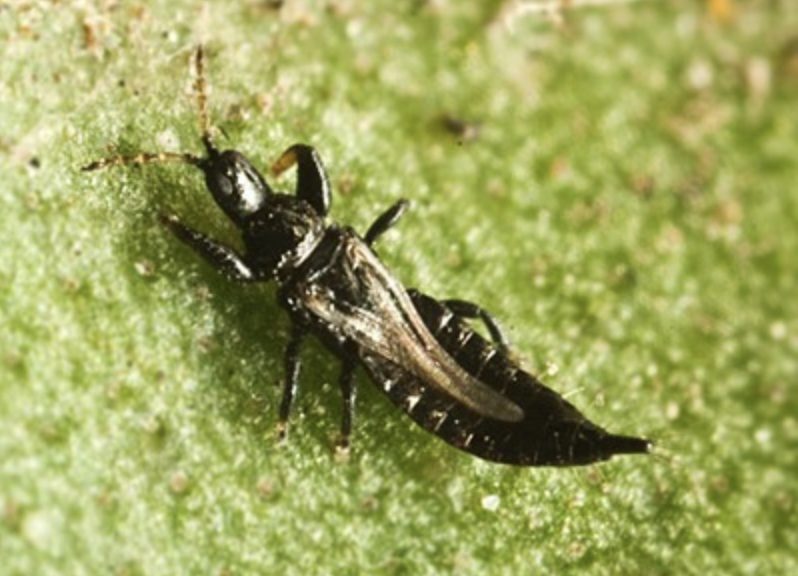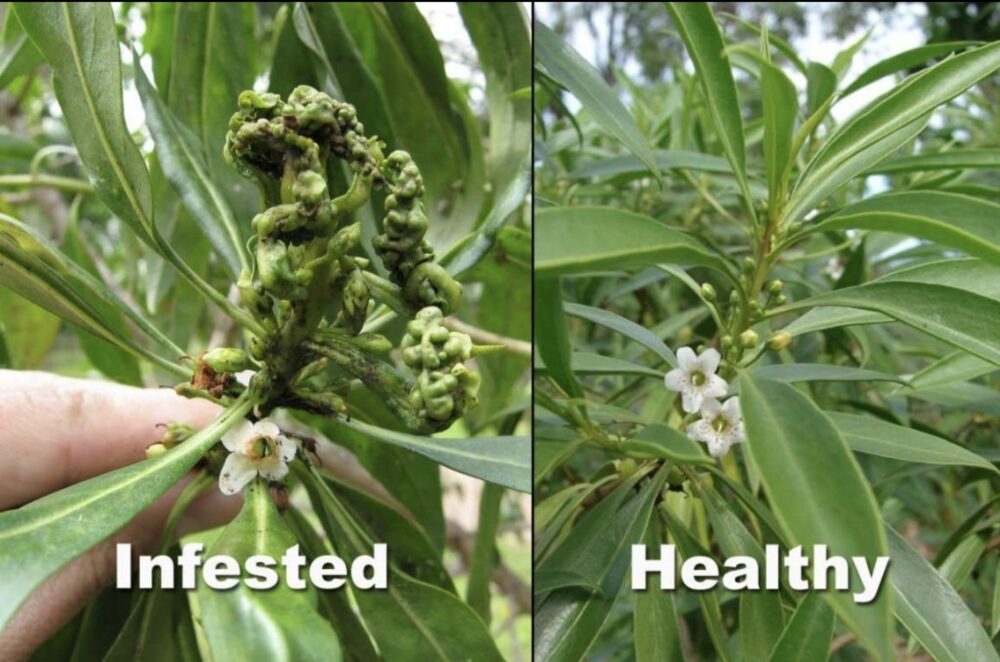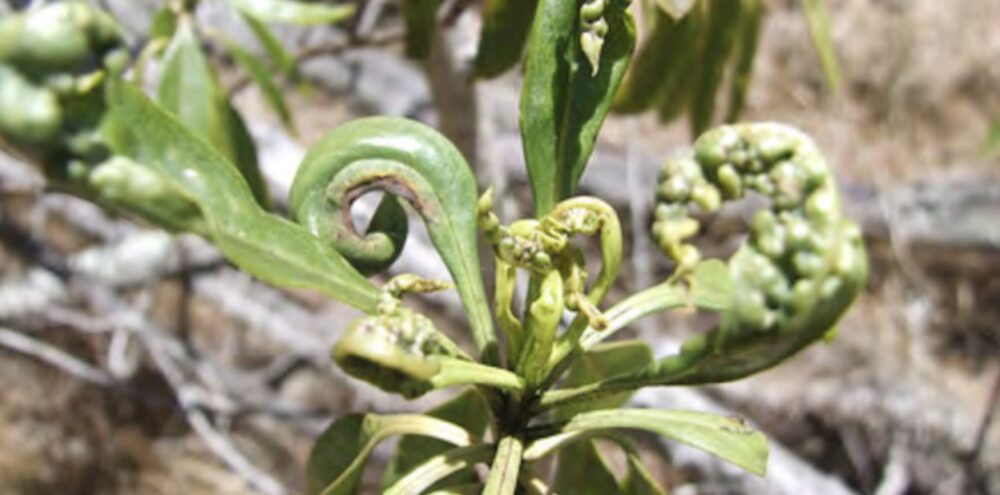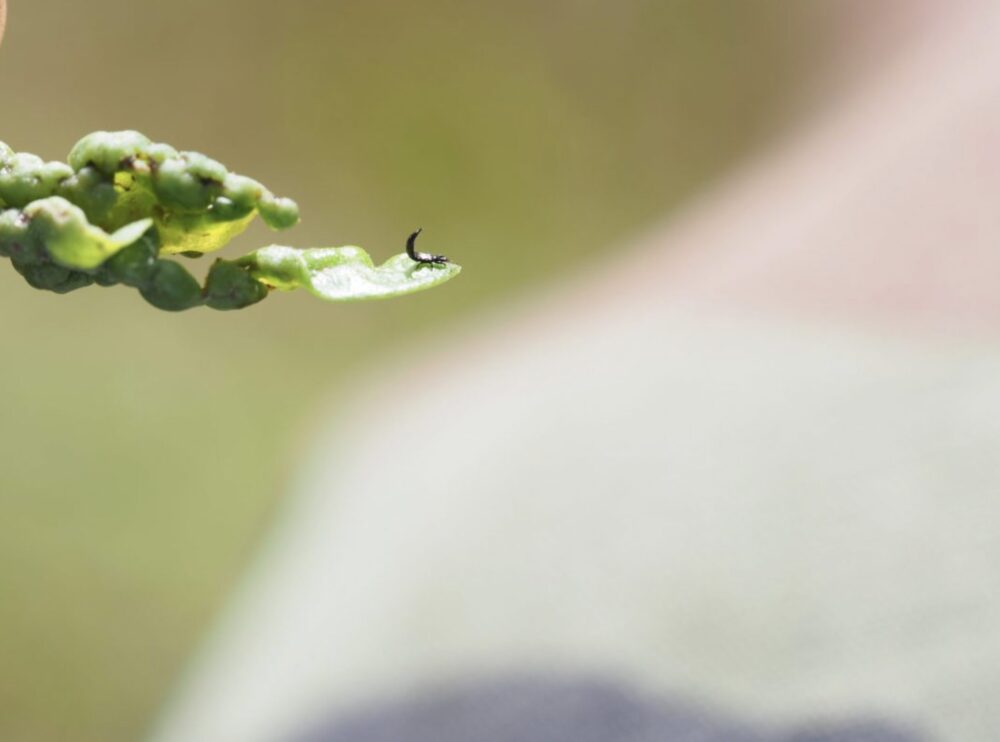
Naio Thrips (Myoporum Thrips)
REPORT IF SEEN: This species was recently detected on Kauaʻi for the first time. If you see it please report it.
Myoporum Thrips (Naio Thrips)
Species: (KLAMBOTHRIPS MYOPORI)
Myoporum thrips, an invasive insect that attacks native niao plants, was detected for the first time on Kauaʻi in August 2025. Sightings of this pest or damaged naio plants should be reported immediately.
KISC, DLNR – Division of Forestry and Wildlife (DOFAW), Department of Agriculture and Biosecurity (HDAB), and partners are currently conducting surveys island-wide on cultivated and wild niao plants to determine the extent of the infestation and identify next steps in the response.

Description
- Thrips are small sap-sucking insects with feathery wings.
- Native to Tasmania.
- Tiny, about 2mm long, and shiny dark brown with a noticeable posterior tube. Immature thrips are yellow to orange in color.
- The leaf curling and gall formation effects of thrips on naio plants will be noticed before any insects are seen.
- Thrips have caused widespread damage on the popular landscaping Myoporum plants in southern California and in the San Francisco area.
- Myoporum thrips can be found on many Myoporum species, but is especially noticeable on our native naio species.
- They were first detected on Hawaiʻi Island in 2009 and Oʻahu in 2018.
Impacts
- Myoporum thrips (Naio Thrips) damage includes severe gall-like distortion of the new leaves and terminals.
- The insects suck out the healthy tissues of new leaves. The stunting of growth at the terminal ends of the plant occurs and leaf curling or folding is common. Eventually new leaves stop forming and the plants will die.
- In Hawaiʻi, this pest can have devastating effects on our native naio trees which are an important component of lowland and coastal dry forest.
- 90% of the wild naio at sites on the Hawai’i Island have died due to the damage caused by thrips.





How you can help:
Help from Kauaʻi residents will be critical to ensuring the full infestation is discovered and treated. Naio plants should be checked for damage, including curled, scarred leaves and small black insects. Damage should be reported immediately.
- Do not move naio around the island. Currently, Myoporum thrips has only been detected in isolated locations on Kauaʻi. It is important not to transport healthy or infested naio plants.
- Monitor – Monitor your naio plants every week for damage to leaves.
- Report – Infested plants will exhibit the damaged leaves. Report suspect damage immediately to 643pest.org or kisc@hawaii.edu and include photos of damage.
- Do not plant naio yet. Plant other native or non-invasive plants.
- You can visit, Plant Pono for healthy landscaping choices.
- Recommended alternatives are: koaia, a’ali’i, alahe’e, and ‘ōhi‘a…and for naio papa use ulei.
- Here is a list on nurseries and store that carry native plants: Native-Plant-Source-List
- You can visit, Plant Pono for healthy landscaping choices.
Feel free to contact KISC for any questions: kisc@hawaii.edu.
Pest Alerts and Publications:
- Press release
- Naio informational rack card
- Early Detection and Rapid Response Plan for Myoporum Thrips (Klambothrips myopori) on Kauai
- Assessing the impacts of an invasive thrips (Klambothrips myopori) infestation on native Myoporum in Hawaii. Cynthia King, Robert Hauff, Leyla Kaufman, and Mark Wright. 2011.
- HDOA New Pest Advisory
